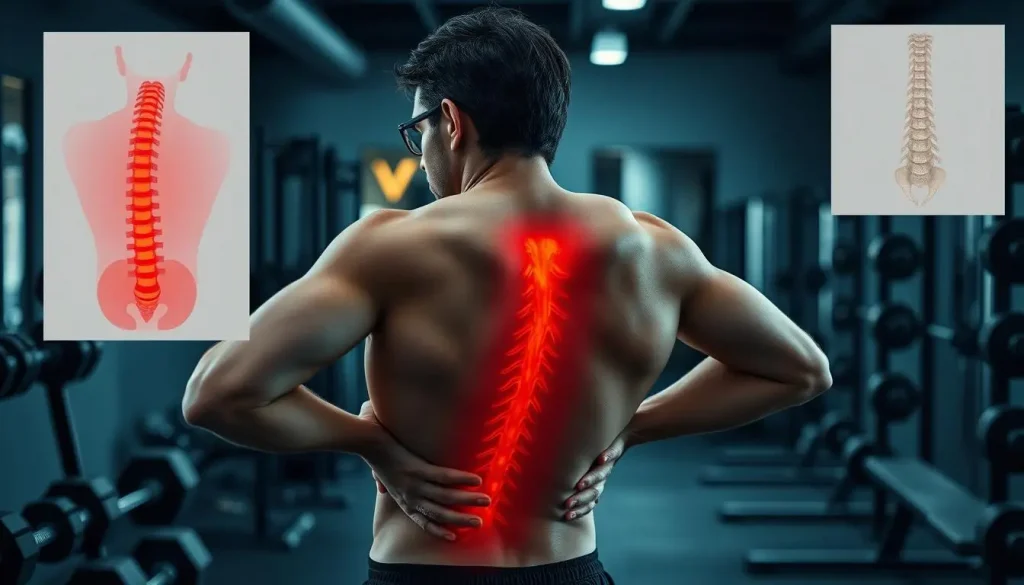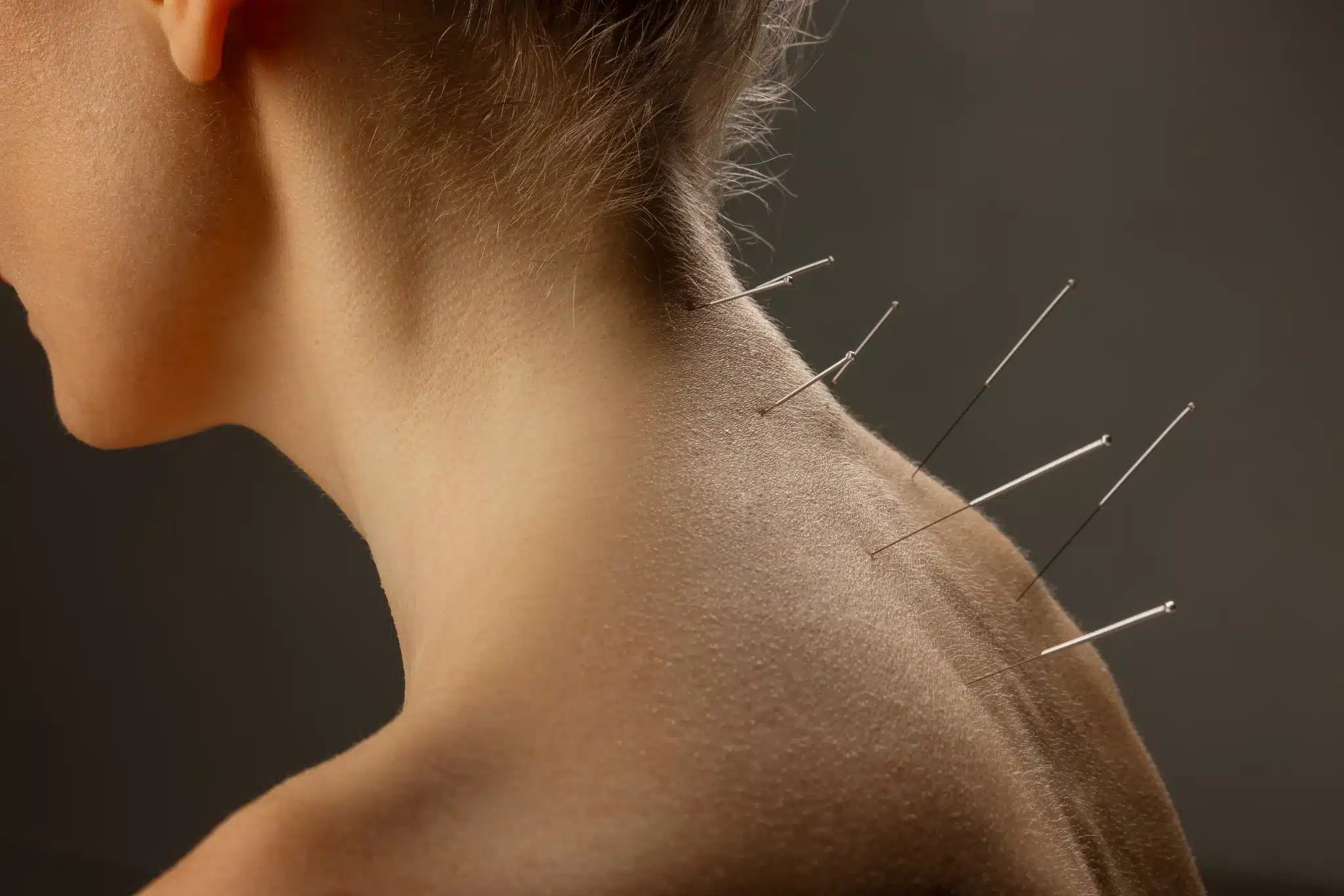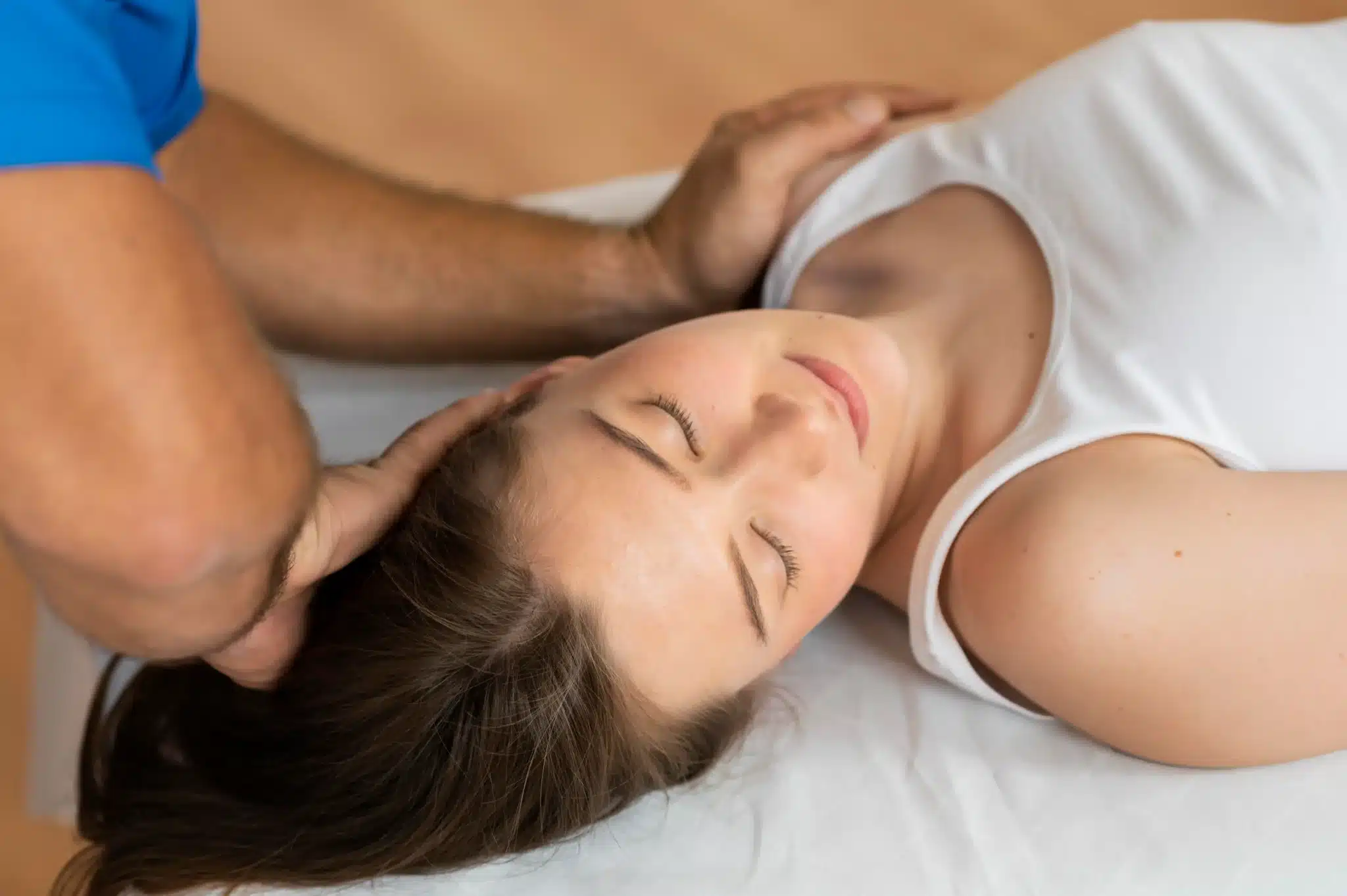Why does your lower back hurt when you squat? If you've felt pain in your lower back after squatting, you're not alone. Studies show that up to 80% of adults deal with lower back pain at some point. Knowing the reasons and how to fix them can make squats pain-free again.
Using the right technique, choosing the right weights, warming up well, and strengthening your core are key. These steps help avoid pain when squatting.

A visually striking illustration of a human skeletal system focusing on the lumbar region, surrounded by colorful icons representing common causes of lumbar pain after squats, like improper form or heavy weights, set against a gym background with squatting silhouettes and anatomical diagrams in soft focus.
Key Takeaways
- Poor squatting technique is a leading cause of lumbar pain during squats.
- Maintaining proper hip and ankle mobility can prevent lower back discomfort.
- Weak core muscles significantly contribute to the likelihood of lower back pain while squatting.
- Gradual weight progression and adequate warming up are crucial in preventing lumbar injuries.
- Consult a doctor if the pain persists or if there are symptoms suggesting a serious condition.
For more details, check out this article. It dives deep into why and how to stop lower back pain when squatting.
Introduction to Lumbar Pain After Squats
Many people who work out or lift weights often feel pain in their lower back after squats. This pain can be mild or severe and can really affect their daily life. For example, some might feel my lower back burns and hurts during or after working out. Others might find it hard to stand up straight after doing squats.
Learning how to squat correctly is key to avoiding lower back pain. Studies show that doing sit-ups the wrong way can hurt your back. The same goes for squats if done incorrectly. It's also important to avoid bad form in exercises like deadlifts and burpees to prevent back pain.

A person clutching their lower back in a gym setting, with a look of discomfort and frustration, surrounded by exercise equipment like weights and a squat rack, dim lighting emphasizing their posture, body language conveying pain, anatomical illustration of lumbar spine in the background, realistic textures and colors highlighting the strain in their back.
Even simple activities like toe touches can strain your back, especially if you have sciatica. Exercises like Superman poses or glute bridges can also cause back pain if done wrong. Forearm planks, even though recommended, can hurt your lower back if not done right.
Squats are great for building muscle and improving athletic skills. They work your spinal muscles more than planks do. But, lifting too much weight can hurt your lower back. Getting advice from a physiotherapist or personal trainer can help you squat safely.
Older adults might be more likely to hurt their lower back because of conditions like disc degeneration. It's important for them to use the right lifting techniques to avoid back injuries. Using lighter weights and doing more reps can also help prevent back pain.
Knowing when to see a doctor for back pain is also crucial. If the pain lasts more than 72 hours or is sharp and goes down your leg, you should see a doctor right away. By learning the right techniques and taking preventive steps, you can avoid my lower back burns and hurts and stay safe while working out.
Common Causes of Lumbar Pain After Squats
Lower back pain after squatting is common among weightlifters and fitness fans. It can come from bad technique or physical limits. Knowing these causes helps tackle lower back pain and manage vertebrogenic pain better.

A detailed anatomical illustration of the human lower back, highlighting various potential causes of lumbar pain after squats, including muscle strains, herniated discs, and sciatica. The image should be visually engaging, using color-coded sections to represent different conditions, with a focus on key muscle groups and spinal alignment. Include highlighted areas of tension and stress, seamlessly blending realistic anatomy with an educational style.
Poor Squatting Technique
Poor squatting technique often leads to lumbar pain. A survey found 45% of weightlifters get lower back pain after lifting heavy. Bad form, like the buttwink, makes this pain worse, raising the risk by 30%. Keeping the spine neutral is key to avoiding vertebrogenic pain.
Using Too Much Weight
Lifting too much weight is another big cause. Athletes often use bad form when lifting too much, which can hurt their lower backs. Those who arch their backs too much are 25% more likely to feel pain. So, it's important to lift the right weight and use proper form.
Insufficient Hip Mobility
Not enough hip mobility can make squatting hard, leading to back stress. Doing hip mobility exercises helps a lot. Studies show that using alternative squats, like the Frankenstein squat, can cut back pain by 70%.
Poor Ankle Mobility
Poor ankle mobility also limits squat depth and form, causing back pain. Adding dynamic warm-ups and ankle exercises can greatly reduce injury risk and boost performance.
Weak Core Strength
A weak core can't keep the spine stable during squats, making the back prone to strain. Core exercises are crucial for strengthening and preventing vertebrogenic pain. A strong core is essential for good squat form.
Not Warming Up Enough
A good warm-up is key. Experts say dynamic warm-ups, like the cat-cow stretch, can cut back pain by 60%. Without a proper warm-up, muscles and joints aren't ready for squatting, raising injury risk.
| Cause | Impact |
|---|---|
| Poor Squatting Technique | 30% higher likelihood of lower back pain |
| Using Too Much Weight | 25% more likely to report back pain |
| Insufficient Hip Mobility | 70% reduction in back pain with proper exercises |
| Poor Ankle Mobility | Significantly lessens injury risk with proper exercises |
| Weak Core Strength | Prevents vertebrogenic pain |
| Not Warming Up Enough | 60% reduction in back pain with proper warm-up |
The Impact of Lumbar Pain After Squats on Day-to-Day Activities
Lumbar pain after squats can really affect your life. Simple tasks like tying shoelaces or carrying groceries become hard. If the pain doesn't go away, it can make everyday activities tough.
The Centers for Disease Control and Prevention (CDC) found that almost 40% of adults had back pain in 2019. This shows how common back pain is. It can make it hard to do jobs that need bending or lifting, making things even worse.
Overworking the lower back muscles by allowing the back to round or overextend during squats can lead to potential injury and soreness.
Chronic soreness from overused muscles can also hurt your mood. Activities like walking, swimming, and yoga are good for keeping pain away. But, do them in small amounts to avoid more pain.
Using different exercises instead of squats can help. Try bird dog, bodyweight squats, and step-ups to ease back pain.
For back pain, drugs that reduce inflammation can help. Physical therapy and mindfulness also play big roles in managing pain.
- Avoid activities that worsen back pain off, such as poor form during squats and overworking specific muscle groups.
- Incorporate low-impact exercises like swimming, walking, and yoga into your routine.
- Consider alternative muscle-strengthening exercises to mitigate back pain.
Being careful with exercise form and not overdoing it can help avoid back pain. This can make your daily life better and less painful.
Diagnosing Lumbar Pain: Vertebrogenic Low Back Pain ICD 10
Figuring out what causes lumbar pain is key to treating it well. Pain from the vertebrae needs a clear diagnosis. This is called vertebrogenic pain.
What is Vertebrogenic Pain?
Vertebrogenic pain comes from the bones in your spine. It can lead to problems like spinal stenosis. About 90% of people will have low back pain at some time, and it might be vertebrogenic.
This pain is often listed as M54.59 in the ICD-10. Accurate coding helps in treating, storing, and sharing health data.
Lower Back Pain Differential Diagnosis
To find the right cause of lower back pain, doctors look at many things. This includes muscle strain, herniated discs, and spinal stenosis. Spinal stenosis is common in people over 60 and can cause nerve problems.
Doctors use MRI to see these issues. ICD-10 codes help in managing pain and getting the right treatment.
Chiropractic care is also a good option for vertebrogenic pain. Chiropractors adjust the spine to help with pain and function. This approach is safe and can be as good as opioids, as shown here.
For lower back pain, finding the cause is crucial. The latest ICD-10 codes help doctors create better treatment plans. This leads to better care and results for patients.
Importance of Proper Squatting Technique
Learning the importance of proper squatting technique is key to avoiding injuries and improving performance. Squats work many muscles, like the legs, glutes, back, and core. When done right, they are a full-body exercise. Using the correct technique boosts benefits and lowers the risk of injury from bad form.
Steps to a Proper Squat
- Start Position: Stand with feet shoulder-width apart, toes slightly pointing outward. This helps keep balance and allows for better joint movement.
- Initiate the Movement: Bend at the hips and knees at the same time, keeping your spine straight. Don't round your back to avoid putting too much strain on your lower back.
- Descent: Lower yourself until your thighs are almost parallel to the ground. Keep your heels flat on the ground.
- Ascent: Push through your heels, using your core and glutes to go back up. This keeps you stable and in control.
- Breathing: Breathe in as you go down and breathe out as you come up. This helps keep your trunk muscles stable.
Common Mistakes to Avoid
Staying away from common mistakes is vital for mastering proper squatting technique. Here are some key errors to avoid:
- Inward Knee Collapse: Make sure your knees stay over your toes during the whole squat. If they collapse inward, it can hurt your knees.
- Overextension of the Lower Back: Don't arch your back too much, as it can strain your lower back. Keep your spine neutral throughout the squat.
- Lifting the Heels: Keep your heels on the ground for stability and proper force distribution. If your heels lift, it can throw off your balance and lead to bad form.
Following these steps and avoiding these mistakes will make your squats safer and more effective. Proper squatting technique strengthens your back and helps prevent back pain. This leads to better long-term fitness and health.
Exercises to Improve Hip Mobility
Improving hip mobility can help reduce stress on your lower back during squats. Adding hip mobility exercises and stretching exercises for tight hip flexors to your routine can help. This can improve your range of motion and prevent lower back pressure during squats.
Hip Flexor Stretches
Regular hip flexor stretches are key to keeping your hips flexible and avoiding tightness. Here are some stretches to try:
- Lunge Stretch: Start in a kneeling position, step one foot forward into a lunge, and push your hips down. Hold for 30 seconds on each side. This stretch targets the hip flexors and boosts mobility.
- Threading the Needle: Lie on your back, cross one ankle over the opposite knee, and pull your leg towards your chest. Hold for up to 1 minute per side. This stretch helps release tight hip flexors.
- Single-Leg Bridge: Lie on your back with one knee bent and foot flat on the floor. Lift your hips while raising the other leg and hold for 30 seconds. Repeat on both sides to balance hip strength and flexibility.
Dynamic Warm-Up Routines
Dynamic warm-up routines before squats prepare your hips and enhance mobility. They also help prevent injuries. Here are some exercises to try:
- Squat Hip Pry: After static stretches, perform a squat and use your elbows to push your knees outward. This helps translate your unlocked mobility into better squat performance.
- Russian Baby Makers: Squat down and place your hands on the ground while keeping your heels down. Move your knees in and out to open your hips, aiding in better knee drive during squats.
- Adductor Rockbacks: On all fours, extend one leg out to the side and rock your hips back and forth. This enhances adductor mobility, crucial for deeper barbell squats.
By regularly practicing these hip mobility exercises and stretching exercises for tight hip flexors, athletes can see big improvements in squat depth and comfort. Consistent practice builds flexibility and strength in the hip area, creating a solid base for effective squatting.
Tips for Enhancing Ankle Mobility
Improving ankle mobility is key for better squatting and less discomfort. This section offers practical tips and exercises to help.
Best Ankle Mobility Exercises
Doing specific ankle mobility exercises can boost dorsiflexion and correct ankle alignment. Two methods stand out in addressing soft tissue issues:
- Banded Ankle Mobilizations: Do 8-10 reps with a 3-5 sec hold at the end. This targets joint mobility, easing pinching in the front of the ankle during squats.
- Self Ankle Mobilization: Do 8-10 reps with a 2-3 second hold to enhance ankle movement and stability.
Self Tibial Internal Rotation (IR) mobilization also helps with front ankle pain during squats. It involves 8-10 reps for a 2-3 second hold, making sure to avoid knee movement inside the ankle.
Incorporating Mobility Work into Your Routine
Adding these ankle mobility exercises to your routine can lead to lasting benefits. Here's how to integrate them:
- Begin with a light warm-up to get your muscles and joints ready.
- Add Banded Ankle Mobilizations and Self Ankle Mobilization to your pre-squat routine.
- Do Self Tibial IR mobilizations if you feel pinching during squats.
- Slowly increase the intensity and duration of exercises as your mobility grows.
Good ankle mobility not only boosts squat performance but also reduces stress on the lower back.
Strengthening Core Muscles to Prevent Lumbar Pain
Lower back pain affects nearly 80% of adults at some point. It's key to strengthen core muscles for spinal stability, especially in squats.
Core Stabilization Exercises
Core exercises focus on muscles like the transverse abdominis, back extensors, and abdominal muscles. They help distribute load evenly during hard activities. Studies show they're good for long-term relief from low back pain.
Some top core exercises are:
- Planks
- Dead Bugs
- Bicycle Crunches
- Bird Dogs
- Bridges
Importance of a Strong Core in Squatting
A strong core is vital for safe squats. It keeps your body aligned and stable. Without it, you might feel back pain.
Good posture and breathing help activate your core during squats. This prevents muscle strains and nerve injuries. Strengthening core muscles also helps prevent future pain.
Always listen to your body and see a doctor before starting new exercises, especially after injuries.
When to Seek Medical Attention for Lumbar Pain After Squats
Lumbar pain after squats might mean a serious issue, especially if it doesn't go away. Even with the right technique, warm-ups, and stretches, it's key to watch for signs of serious injury. Getting help from a doctor quickly can stop long-term damage and help with treatment.
Signs of a Serious Lower Back Injury
Look out for sharp, stabbing pain that doesn't get better with rest. Also, watch for numbness, tingling, or weakness in your legs. Pain that goes down your legs or makes moving hard is a big warning sign.
Injuries from squats can happen if you don't use the right form, lift too much, or don't warm up enough. It's important to fix these issues while you're working out.
When to Contact a Doctor
If your back pain lasts more than a few days or keeps coming back, see a doctor. It's especially important if the pain stops you from doing daily things or if you see signs of a serious injury. A doctor, physical therapist, chiropractor, or orthopedic specialist can check you out and find the cause.
They'll suggest the best treatment to help you feel better, move better, and avoid more problems.
FAQ
What causes lumbar pain after squats?
Many things can cause lower back pain after squats. This includes bad technique, too much weight, or not enough mobility. Weak core muscles, a bad warm-up, or past injuries also play a role.
How can poor squatting technique lead to lower back pain?
Bad squatting can hurt your lower back. This includes bending your knees in too much, arching your back too far, or lifting your heels. These actions can strain your back, causing pain.
Why does using too much weight contribute to lumbar pain?
Too much weight can put too much stress on your back. This can lead to bad form and injury. It's important to lift within your limits and use proper technique.
How does insufficient hip mobility impact lumbar health after squats?
Not enough hip mobility can hurt your lower back. It limits how far you can move and puts stress on your back. Doing stretches for your hips and a good warm-up can help.
What role does poor ankle mobility play in lumbar pain?
Bad ankle mobility can mess up your squat form. This leads to movements that hurt your back. Exercises for your ankles can help keep your back safe.
Why is a strong core important for preventing lumbar pain during squats?
A strong core keeps your spine stable during squats. It helps distribute the weight evenly. Exercises for your core can strengthen your abdomen, back, and pelvis, protecting your spine.
How can I improve my warming-up routine to prevent lumbar pain?
A good warm-up should include dynamic stretches and mobility exercises. These prepare your body for squats. They help prevent pain by making your muscles and joints more flexible.
What is vertebrogenic pain?
Vertebrogenic pain comes from the vertebrae themselves. It needs a correct diagnosis and treatment to manage effectively.
How does lumbar pain affect daily activities?
Lower back pain from squats can make everyday tasks hard. It can affect your job if you have to bend or lift. It also lowers your quality of life and physical function.
What should I do when my lower back burns and hurts after squats?
If your lower back hurts and feels like it's burning after squats, rest it. Use ice and avoid more strain. If the pain doesn't go away, see a doctor to check for injuries.
When should I seek medical attention for lumbar pain after squats?
You should see a doctor if you have sharp pain, nerve symptoms, or pain that doesn't go away. A healthcare professional can help manage your pain.
Vertebrogenic Low Back Pain ICD 10: Coding Guide





